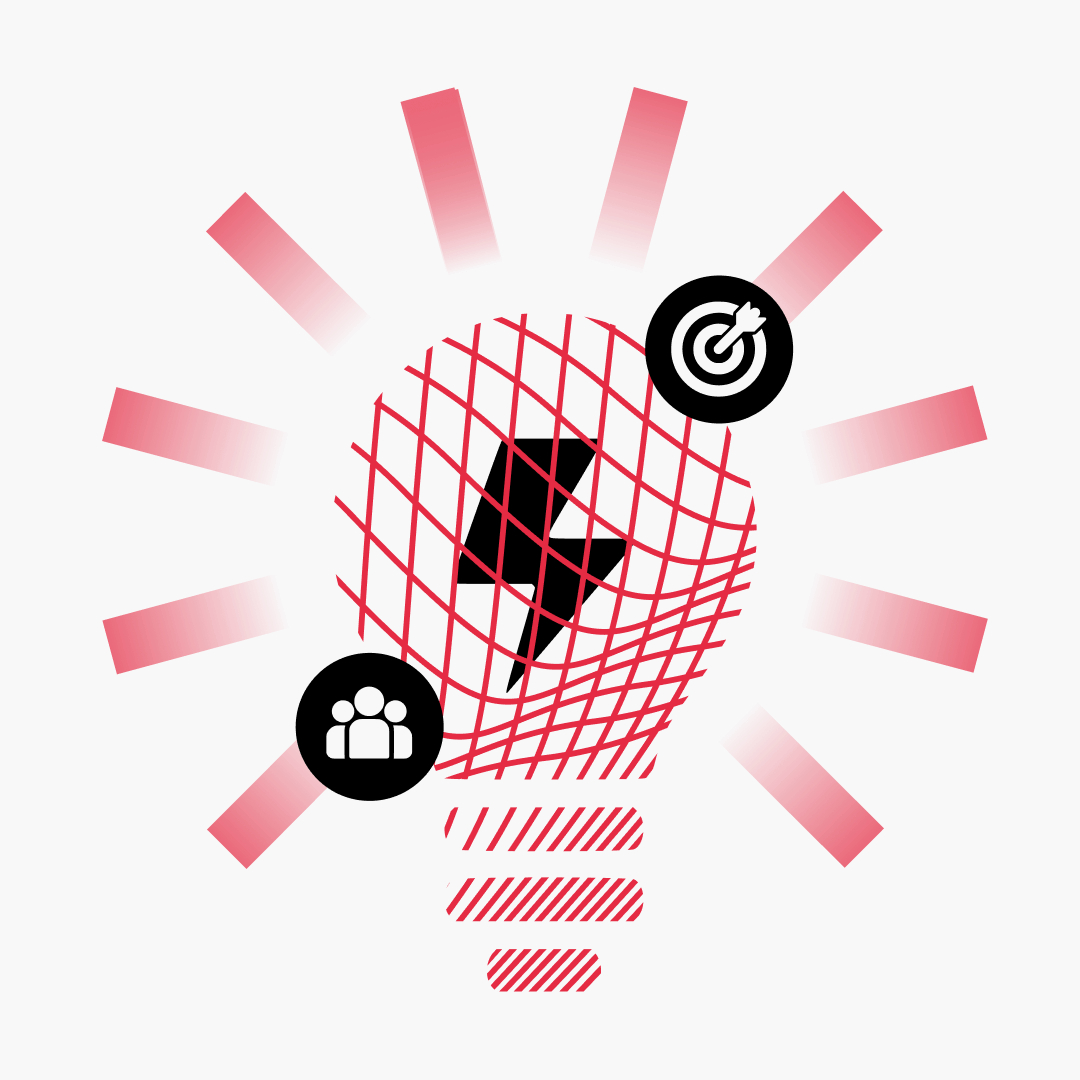Social Media Algorithms That Impact Your Marketing in 2022
What’s your most visited social media platform?
No matter your top pick, it’s backed by algorithms – channel-sensitive recommendation systems that decide which content and in what order you’ll see. Every platform manages algorithms differently, but with one goal: to increase the time users spend on the platform by showing engaging and relevant content. Some networks – like Instagram — also emphasize freshness and place newer content higher than content one or two days old. In 2022, 64% of internet users discovered new products/brands on social media, and 77% used it to find more info about brands.
Whenever you think you’ve got the algorithm figured out, it changes. This is never-ending. But, you can still get a better picture of how to attract and retain more users if you analyze algorithms. In the long run, some changes are more impactful and stay longer. Below, you’ll find our scoop on social media algorithms in 2022. This should help you piece it together and become a digitally competitive business.

Instagram relies on six indicators to rank posts:
- Interactions with other users. Instagram shows you posts by the users you interact with most in the first place. It works based on the number of messages, likes, comments, and tags on each other’s posts. The same goes for interests – if the algorithm identifies which posts catch your attention, you’ll be presented with more content on that topic.
- Recency. You’re likely to see posts that were just uploaded first on your feed. Plus, the more you view Instagram, the fresher posts you’ll see. In reverse, after a pause in the app, you’ll be shown posts that are more relevant to your tastes instead of new ones.
Followed accounts. The app considers the number of accounts you follow, grouping them to show you the most relevant content. For example, if you follow a lot of science-related accounts, you’ll likely see more targeted posts on your feed, explore page, and stories. The same goes for any business.
How Can You Use Instagram To Boost Engagement?
How Can You Use Instagram To Boost Engagement?
On the grounds of how Instagram’s algorithm works, use these tips for your startup:
- Share content relevant to your audience and engage with it. Obviously, you can’t follow each user, but replying to comments and DMs gets your content remembered and your relationship with the audience up a level.
- Maintain consistency when posting and choose when your audience is most active. Posting doesn’t have to be too frequent, especially when you’ve got the analytics figured out.
- Diversify your content. Adding polls, contests, and company-related hashtags encourages more user-generated content. Between photos and videos, there’s also space for carousel posts, memes, or anything that gets people going.

Twitter’s function is a bit more complicated. Here are the pieces it considers:
- Home page & latest tweets. Twitter usually shows tweets in chronological order, with exceptions for tweets based on your interests in the mix.
- Trends. Some topics get trending because of current global events; in other cases, the network simply introduces a topic as trending. Trending tweets show up on the homepage regardless of your followed accounts.
- Topics. Twitter suggests tweets based on the content and users you interact with. Mine, for example, are mostly space and pictures of planets, poetry, filmmaking, and occasional cat/puppy content. You can always vary your choice of topics or mark certain topics as irrelevant.
- Who to follow. Twitter suggests users you might find interesting based on your Twitter activity, promoted profiles, and your contacts and location.
There’s not much detail in how Twitter arranges its recommendations. But, these signals can boost your relevance for the users: tweet freshness, the number of likes/retweets/answers, follower count and location, and the media in the tweet (pictures, videos, GIFs, polls).
How Can You Use Twitter To Boost Engagement?
Here’s what you can do:
- Figure out when your audience is most active by testing different times for tweeting. Post consistently while avoiding niche-specific busy hours, so your audience doesn’t miss your tweets. You can also prompt your followers to engage by retweeting them, responding, and tagging them in your tweets.
- Use keywords. You can use keywords tried and tested by your competitors, industry leaders, or relevant creators. Add rich media like branded graphics in the mix and experiment with formats that give the highest engagement.
- Utilize entertainment content. Not all content has to bring practical value. There’s a high possibility that one of the big companies you’ve known forever posted something just for shits and giggles – a survey or meme – or left a funny comment on their competitor’s post. Use that to your advantage!

Ah, the only platform that places relevance above recency. Besides this, here’s what LinkedIn relies on when showing you content:
- Engagement. On LinkedIn, comments matter more than reactions, and reactions are more important than shares. So, posts that gather more comments spread faster and gain more views too. Another point is the so-called “dwell time.” How long the user spends looking at your post determines whether the system considers it relevant and prompts sharing.
- Connections. There are first, second, and third-degree connections on LinkedIn. The closer your connection is, the more likely you will see their posts on your feed. And if you often interact with a profile, no matter their connection status, you’ll also see more content from that person.
- Relevance. LinkedIn’s algorithm determines user interests by analyzing posts, pages, hashtags, and people users interact with. By showing content with the highest relevance, the platform extends the average on-page time for users.
How Can You Use LinkedIn To Boost Engagement?
Try these steps to grow your reach on LinkedIn:
- Expand your network. Connect with more people in your niche and engage. Focus on thought-out comments instead of shallow likes – this way, you’re more likely to get a response and reach more users with your content.
- Use 3-10 hashtags in your posts. Using hashtags boosts visibility in the same way as Instagram. LinkedIn’s algorithm loves hashtags when done right. Anything from three works well, and beyond ten is spam.
- Tag users. This way, you’ll incite activity. Keep this in mind, though: tag users who won’t ignore or remove your tags. LinkedIn’s algorithm will count your posts as spamming if this happens and lower your visibility.

Facebook has a four-stage process of ranking your content before showing it on other users’ timelines. First, the platform ranks content based on the point we’ll explain in a moment. Then, Facebook filters out spam, misinformation, and less relevant posts based on past user behavior. Next, Facebook analyzes content in terms of personalization and then arranges it to make users spend more time on the platform. Now, here are the factors we mentioned in step one:
- Recency. With Facebook’s algorithm, this comes out as the most crucial point.
- Content-type. The media attached to a post and the type of media users interact with most also impact how your posts appear on the timeline.
- Relationship. This implies the overall interaction between the user and the account, whether a brand, a friend, or a media source.
- Popularity. The more engagement a post induces, the more likely it will appear on someone’s timeline. Simple as that.
How Can You Use Facebook To Boost Engagement?
Here are some tips to help you make it big on Facebook:
- Facebook is similar to Instagram, so posting regularly makes a big difference, just like choosing the right time for it.
- Another essential is targeted content and a mix of formats: anything from text posts to polls, branded GIFs, and short videos can help your content rank as qualified. Plus, live videos are also a big thing for Facebook. So push them.

TikTok
With more businesses transitioning to TikTok, consider this platform. Here’s what affects your appearance in the feed:
- Video information. This refers to whatever users type in the Discovery tab: captions, trending topics, hashtags, songs, or effects.
- Interactions. TikTok analyzes all the accounts a user follows, their searches and favorite videos, likes, comments, watch time, and even hidden accounts they follow. All of this, plus the content the user posts on their profile, helps TikTok determine user interests and tailor content.
- Device & account data. This includes location, language, device type, and selected topics of interest. When you first log into TikTok, these settings appear less meaningful than the previous points.
How Can You Use TikTok To Boost Engagement?
And finally, some tips on hacking TikTok:
- TikTok doesn’t rank content based on follower count or your previous successful posts. So, creating relevant content can help you go viral without having to score a vast audience beforehand.
- Work on your captions. A lot of trending TikTok content revolves around the right keywords. Research what’s taking off and adjust your content to match that trend.
- Catch your audience when they’re active. This matters for all social media platforms, but with TikTok, user activity plays a key role in content ranking.

Final Words
Gaining organic traffic from social media in the marketing industry is the white whale. Marketers must look at each platform separately and alter content to increase the company’s reach. But with more than half of the world’s population using social media, it looks like a big deal worth working on. Hopefully, these tips will help you master algorithms in the times to come.
Want to create a killer marketing strategy for every digital channel?
We’re right here to help you out.
Contact




